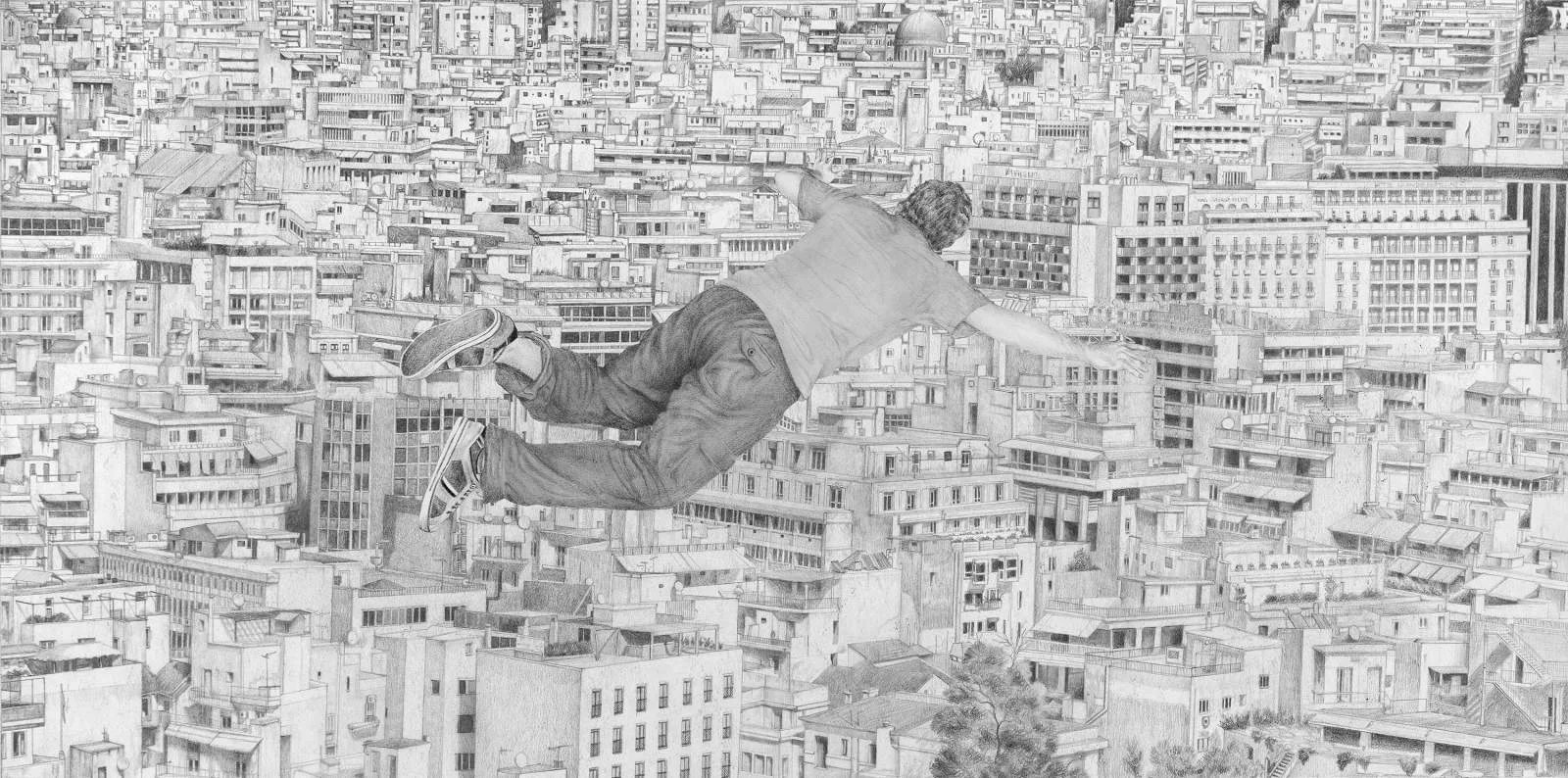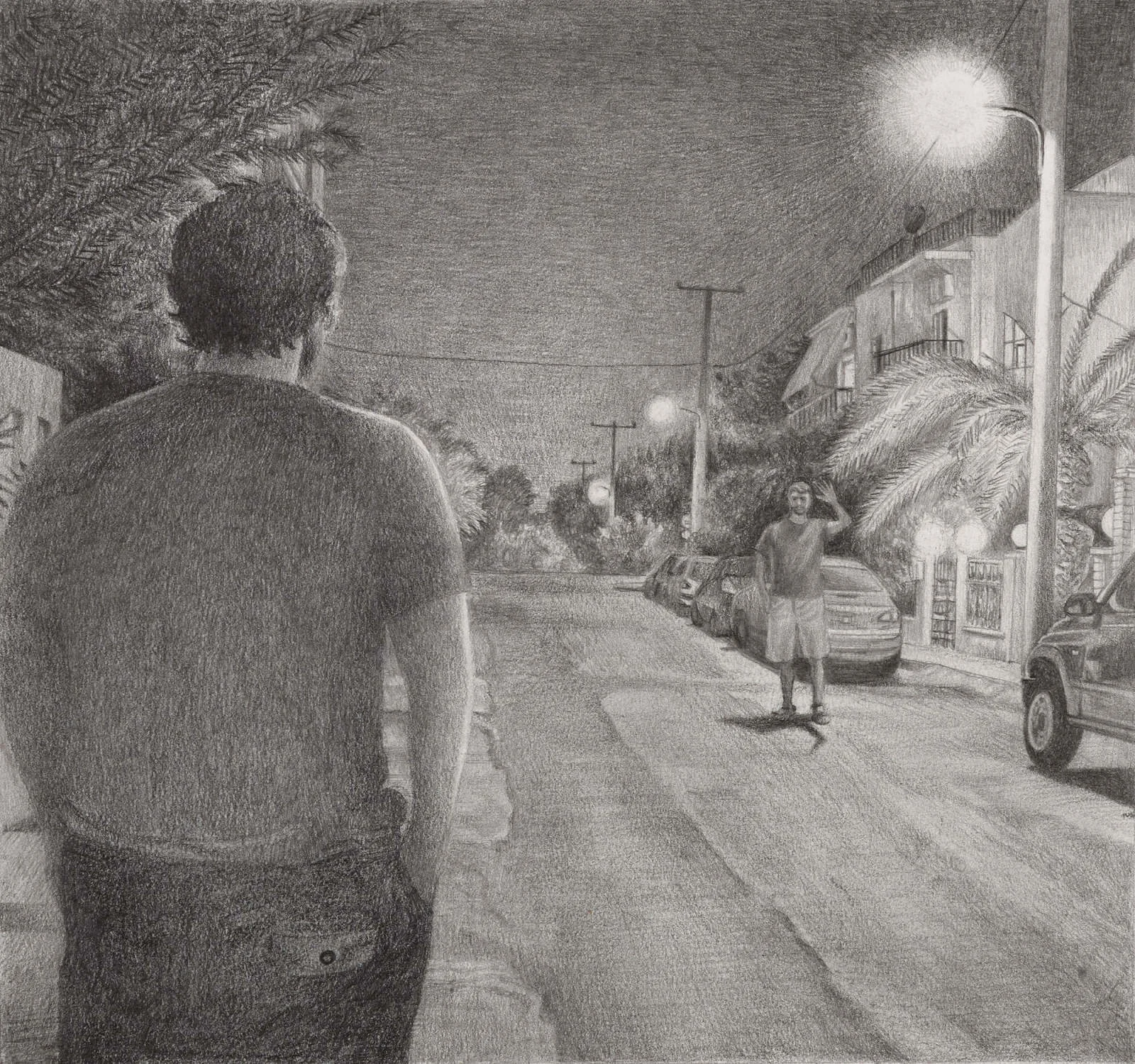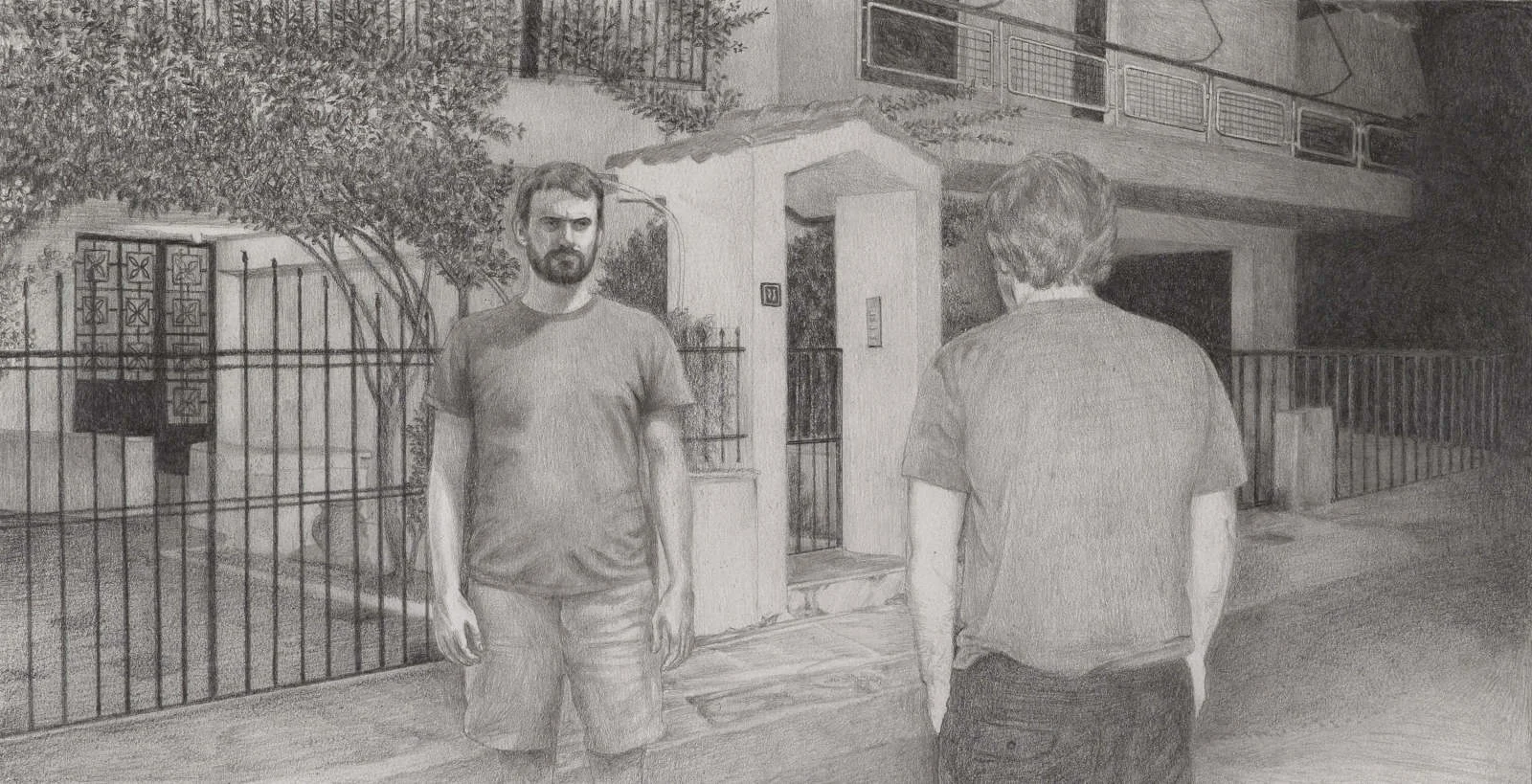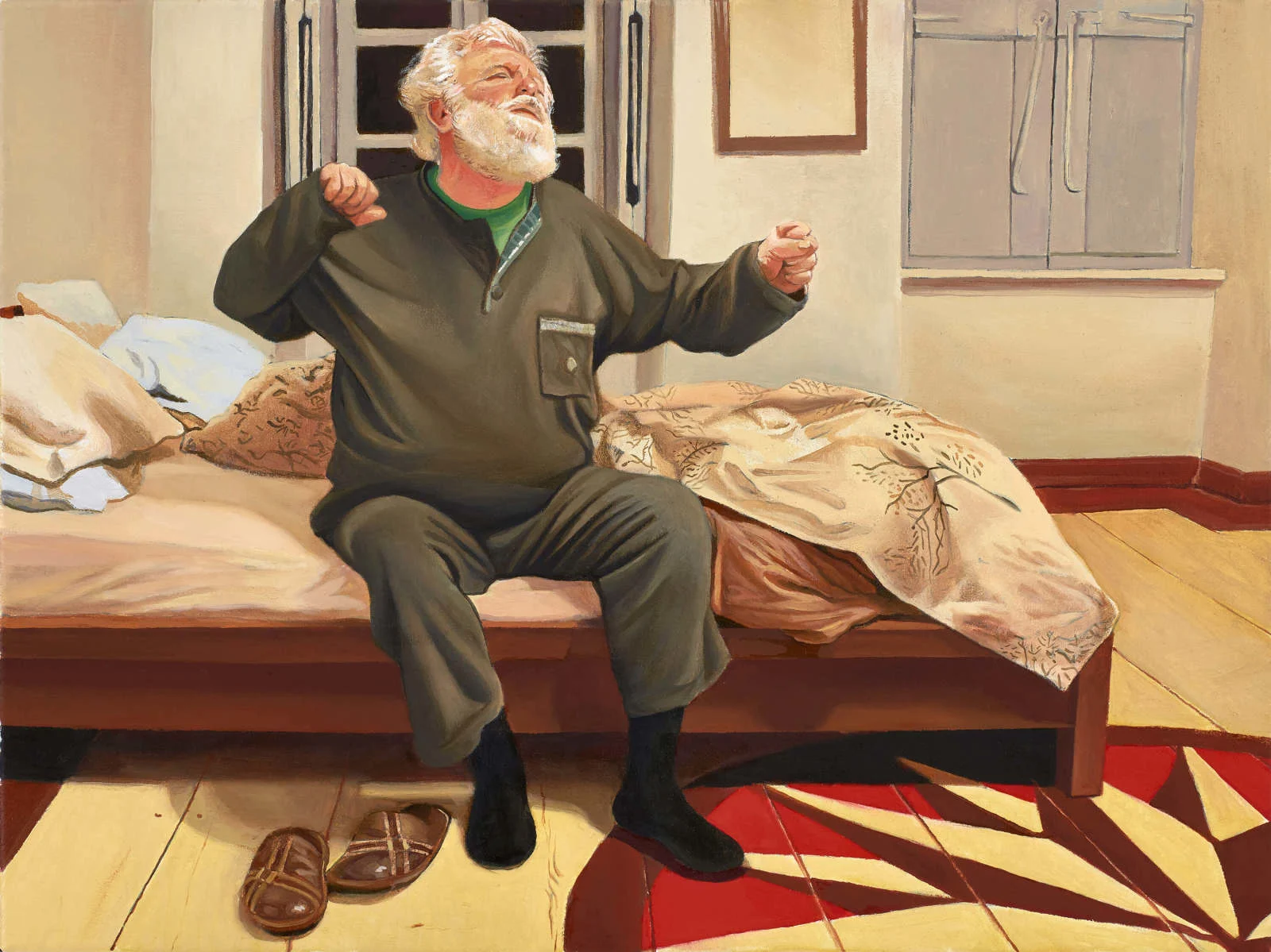

For most of his career, Dimitris Anastasiou has been focused on “storied paintings,” intricate works that invite curiosity about the lives of their characters. As someone with such a tendency to create narratives, it’s no surprise that he moved into making graphic novels in 2018. His first, A=-A, blurs the lines between different layers of reality, and despite the protagonist bearing a very close resemblance to Dimitris himself, he says he has no interest in creating self portraits. Here James Cartwright explores how, despite this statement, Dimitris may still use these pages to process his own experiences, and realizations about life he’s had himself.
Dimitris Anastasiou is deciding whether or not to embark on a second graphic novel. His first, A=-A (A equals negative A) was released in his native Greece in 2018 and in the UK in 2021. It’s a surreal journey through the troubled mind of the protagonist, Alpha, an everyman who wakes to find himself in an altered world where nothing is as it seems and which provides the backdrop for a philosophical and literal journey through Alpha’s subconscious mind.



My work seems like it’s very autobiographical, but I’m just like an actor playing a role.
We meet Alpha as he picks himself up from a pavement with no recollection at all of how he came to be lying there. Bewildered, he encounters Beta, a man who is almost his doppelganger, and they begin a discussion about the texture of reality; who, what and why is Alpha, what is real and what’s not, and is there anything at all of which he can be certain? Beta insists that things are perfectly normal, but Alpha knows instinctively that this is not the case.
“It’s an oneiric odyssey for Alpha,” Dimitris says, “as he tries to find a piece of solid ground on which he can stand.” But narrative and aesthetic style are all working against him, and as he stumbles from scene to scene and chapter to chapter, Dimitris transitions his media from pencil sketch to monochromatic pen and ink, and finally on to detailed, full-color paintings. Reality metamorphosizes before our very eyes.



These shifting styles serve not only as a disorientating backdrop to the story, but as a showcase of Dimitris’ skill as an artist. For the majority of his career, Dimitris has not been a graphic novelist but a painter of portraits and “storied paintings,” a 21st-century Van Eyck (although this is not a comparison he’d make himself) exploring consciousness and the peculiarities of human experience within the backdrop of modern Athens.
Thematically A=-A is in keeping with the rest of his oeuvre, and in fact, the idea from the graphic novel emerged from a richly detailed pencil sketch of Athens that Dimitris completed for an exhibition some years ago. “I was drawing this pencil drawing, and as I had worked on it so much, I wanted to use it for something more. And I thought that, for some reason, a flying man over Athens would be a nice idea. I put these images together and a story started forming.”


I’m not a very positive person, but when my son came along I had to revise my nihilism.
So far the work has been received as well as can be expected for a medium with such a critical fanbase – “most painters thought it wasn’t painting, most comic fans thought it wasn’t a comic,” jokes Dimitris – which ought to give its creator some confidence that his sophomore effort will have a similarly captive audience. But he’s no longer a first-time graphic novelist and knows the sheer scale of the work ahead of him, which right now is cause for some anxiety.
“The basic thing is fear. I’m frightened to make the final decision because I know it will be five or six years and thousands of hours of work, so I’d like to be certain that I have something worth going for.”


Whether or not he’s certain, the characters for Dimitris’ next graphic novel seem keen to get out of his head and onto the page. They’ve been with him since 2018, just after the publication of A=-A, and he already has much of their narrative worked out in his head as well as in a few storyboarded vignettes. “I don’t think I’ll be able to say no to it,” he says resignedly. “I’ve been living in this world of theirs for some time.”
Dimitris means this literally as well as figuratively; his new protagonist is “a nihilist guy who has a child” and has to reckon with how the experience of fatherhood alters his world view. Dimitris recently became a father: “I didn’t want to have a child because philosophically I’m not a very positive person,” he says. “I think that life has no meaning. But when my son came along I had to revise my nihilism because now I had a great reason to think of life in a different way, and I realized there was something more.”


For an artist who claims not to be interested in creating self-portraits, there are certainly plenty of parallels between Dimitris’ life and his art. At first glance, one could be forgiven for thinking that his work is primarily a body of self portraiture, as many of his paintings and drawings feature a figure that resembles the artist himself, Alpha included.
But that’s simply an optical illusion, he says. “Because I paint myself a lot my work seems like it’s very autobiographical, but I’m just like an actor playing a role.” He insists that the themes he’s exploring are universal, archetypal, and he always holds back from including details that are too personal. But what’s more personal than your own face, I ask him? He replies quickly: “I just have one of those faces. It’s not very unique.”


